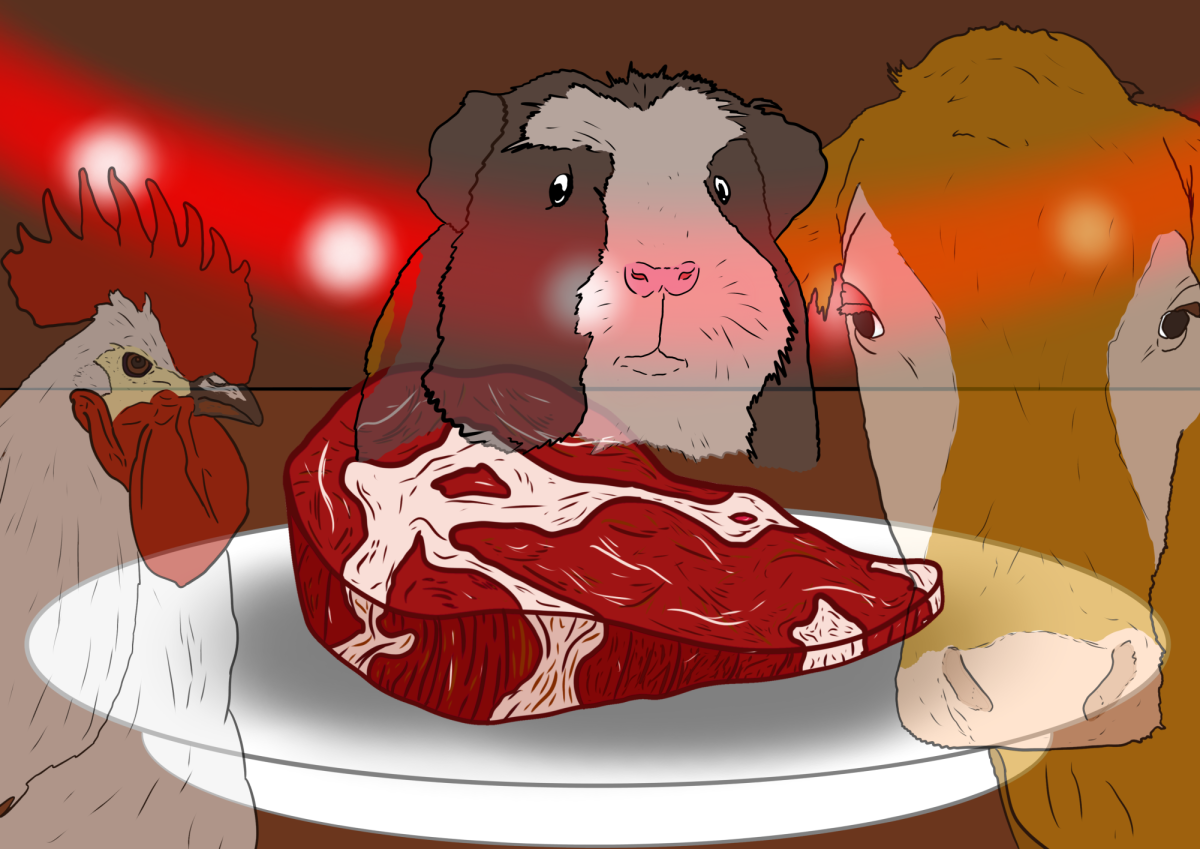
Jaewon Jang
Different cultures worldwide have different standards for animal consumption. From insects to guinea pigs, parrots to fertilized duck fetuses, many Americans consider some of these cultures' unconventional foods to be strange.
A common question arises regarding the consumption of guinea pigs, parrots and other animals “too compatible” with humans: Is there really a line between uniquely tasty and nauseating? In reality, America’s perception of animal consumption is a result of the underlying stereotypes, ethical double standards and overlooking of diverse cultures.
Ironically, the stigma surrounding consumption of “atypical” animals reveals the disrespect towards and diminishment of food traditions since America, historically, is built upon a blend of coexisting cultures.
We consider eating beef and pork “normal” yet in some places and religious doctrines — namely areas populated by Islam, Judaism, Hinduism and certain Christian denominations — it is considered taboo. Muslim and Jewish communities can be shunned for being “strict” or “irrational” through animal slaughtering practices. Yet, while we condemn these “strange” cultures, America’s system of inhumane factory farming and farm animal abuse are considered typical measures of capitalism and lust for money.
Cultural relativity between demographics portrays the true subjectivity of animal consumption.
America’s views originate from an attitude of Western cultural superiority: the idea of labeling certain foods as “gross,” “weird” or “exotic.” We elevated certain foods, particularly those from western origins, to delicacies. These include escargot (snail) or foie gras (duck/goose liver), which are held in high regard and set to the golden standard. In contrast, consumption of foods like insects, are dismissed as repulsive and uncivilized. How can we continue to support the notion of “acceptable” foods over universal experience?
There is a wide range of delicious cuisine that we are too afraid to experience: sharks in Brazil, insects in Mexico, fertilized duck fetuses in the Philippines — the list goes on.
Outside of animal consumption, experiencing other cultural foods in general not only broadens our horizons, but it also reduces stereotypes. The story of an immigrant kid getting mocked for bringing “smelly” lunches is sadly a common experience. Moreover, what is once seen as “weird” later often becomes a trendy fusion restaurant or social media fad; these foods range from the several variations of spiced curry to fermented soybean, Japanese natto.
On a global scale, food is being weaponized to stigmatize groups like Chinese “dog/cat eaters” or African dishes being considered crude and unrefined.
Sometimes, this arises from fears of disease. As COVID-19 swept through America, Chinese individuals faced racism due to the virus’ origin. Was the fear of Chinese people being “disease bringers” during this era really out of genuine risk, or was it a superstition formed out of prejudice?
Moving away from such biased factors, the view on animal consumption should consider the sustainability of our future. For instance, the “demand for meat consumption has reached unprecedented levels in recent decades, driven by factors such as population growth, rising affluence … changing dietary preferences … [and consumption will] most likely continue to increase as a consequence of the growing demand for meat,” according to the National Library of Medicine. The industry will continue to accommodate this demand with a shift towards more unethical animal farming methods.
To alleviate this outcome, shifting towards other animal-based products is an inevitable future. “The production of insects for food and feed [generating] significantly less greenhouse gas emissions and uses considerably less land” compared to standard livestock, as stated by a study in the National Library of Medicine. Insects should be valued past their negative stigma and viewed from an upright, effective lens.
In truth, this requires bravery.
Ethical questions of animal consumption should not simply be based upon society’s stereotypical conceptions on what is “okay to eat,” but be considered from a multifaceted perspective. When representing our diverse communities in America, we need to re-evaluate where our standards truly lie.